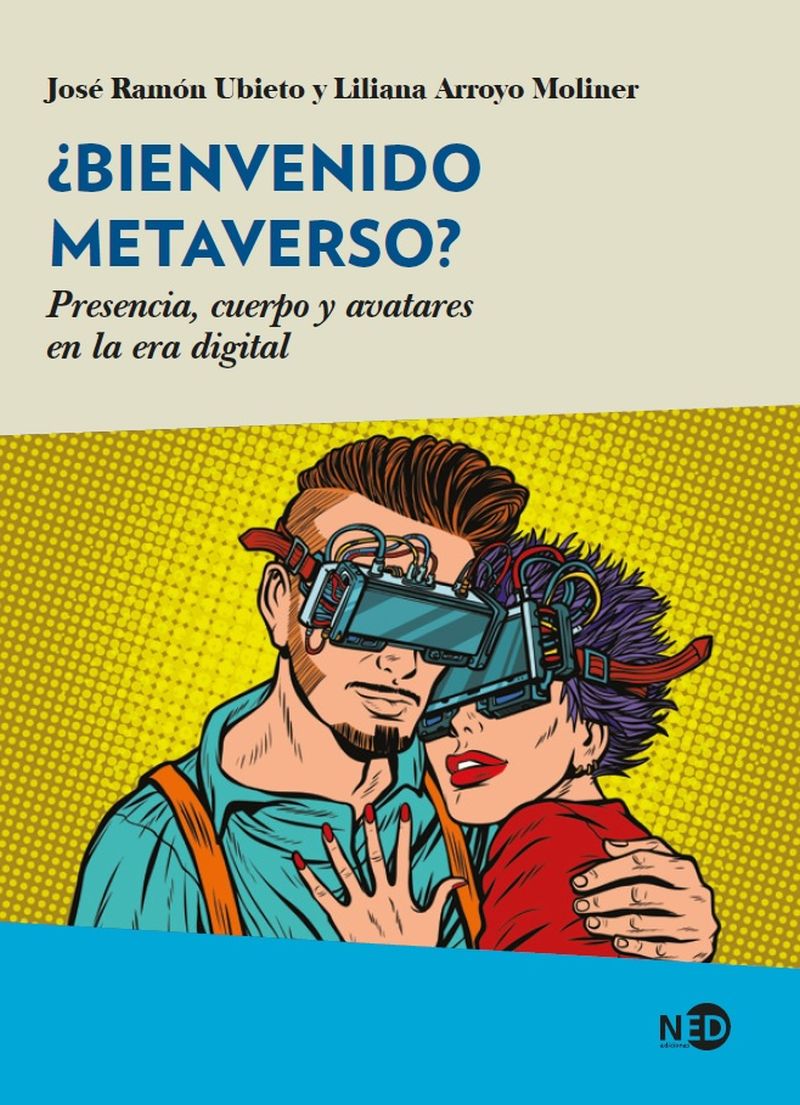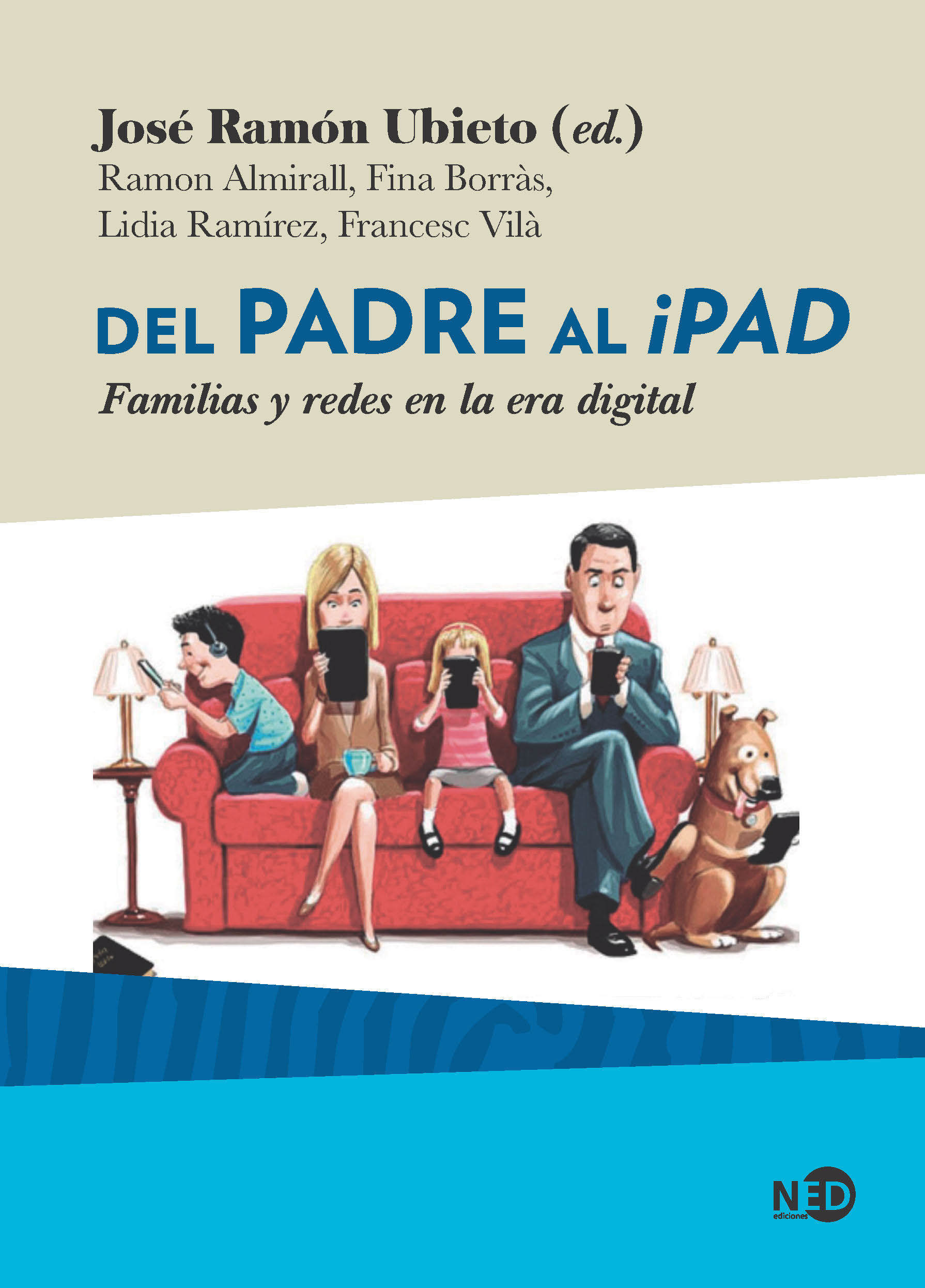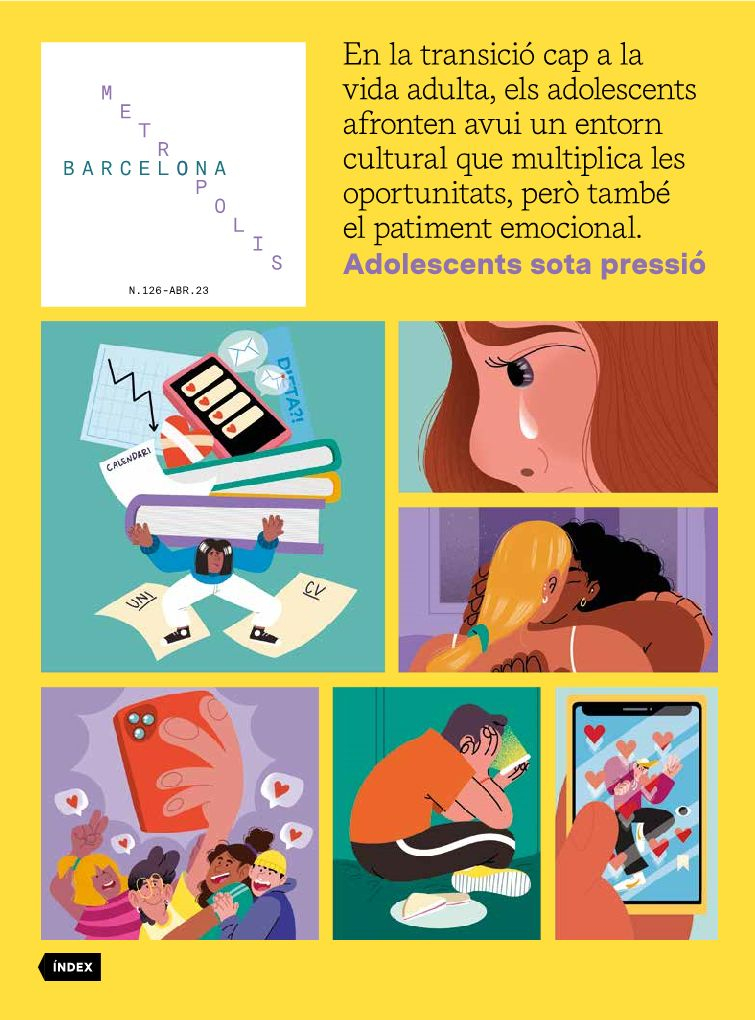Hybrid teens: between presence and virtuality
- Dossier
- Apr 23
- 9 mins

Today’s reality cannot be interpreted with last century’s codes. All too often, our prejudices make us ignore the evident change in ways of living the adolescence due to three key transformations: the pursuit of immediate satisfaction, the new sexual identities and the breaking down of the clear separation between physical presence and virtuality.
Teenagers spend a considerable amount of their time on the internet, especially on TikTok, their favourite social networking site. Ninety per cent of teenagers have a smartphone and 36.7% spend more than six hours a day online.[1] There they get information; they consume music, pornography and video games; they insult one another, but they also make friends, work together and show off their artistic and/or technical creations. The digital world, like Janus, has two faces; and like the pharmakon, it holds the poison and the remedy.
Some adults view this new reality with trepidation: they see teenagers as violent young people, hooked on screens or whimsical and fickle beings. These are ways of continuing to “interpret” the lives of 21st-century subjects with 20th-century codes, thus allowing our prejudices to disregard their reality and also denying the obvious fact that historical circumstances change, and this in turn changes the way we live our lives.
What we adults prefer to ignore is the torment produced by this image of themselves, which they do not like – when they look at themselves in the mirror/on screen – and which violates them internally in different ways: sometimes, as a nagging emptiness, at other times, as an overwhelming overload. Their first solution is to try to comfort themselves with the never-ending consumption of gadgets, toxic substances or constant acting out, which includes various forms of violence: self-harm, bullying, fights... We choose to forget the past because it upsets us, and we prefer to label these adolescents as problematic, instead of seeing this transition as a difficult process for every human being and therefore paying attention to their real afflictions.
Three 21st-century transformations
Three transformations have been noted, which help us to understand this new reality. The first can be called frenzy and vertigo, two emotions that aptly define the era in which we live, marked by a quest for immediate – and sometimes compulsive – gratification through the objects we consume or the experiences we have. We always expect them to be powerful and great, as if we can never get bored or give ourselves time to wait between one indulgence and the next.[2] What is new is presented to us as an imperative to achieve happiness,[3] we go from non-stop euphoria to anxiety about not reaching the expected goals or the fear of not being up to the challenge. Therefore, alongside all this euphoria we find the other side of the coin: drifting into despondency because it is not sustained, be it in the form of self-harm, eating disorders, self-harming ideas, addictions or feelings of failure.
Digital reality is offered to adolescents as a new drive domain – a scenario unheard of until a few decades ago – to achieve satisfaction through what Freud referred to as drive objects: the voice and the gaze, preferably. They look and are looked at, they let themselves be seen and heard, they listen and make themselves heard. They accumulate objects (videos, photos and music) and they are givers and receivers (of insults, provocations, defamation and sexting). Meanwhile, they seek recognition from others and from the group as a sign of belonging to a community.
Young people panic about going unnoticed in the digital community, since what is not shown on social media does not seem to exist.
The oscillation between digital frenzy and vertigo is clearly manifested in the so-called FOMO (Fear of Missing Out), the panic of missing out by not being in the right place, which pushes them to be permanently connected and scrutinise how others are enjoying themselves, where and when, assuming that if they are not there, their life has lost its lustre. It is the panic of going unnoticed in the digital community, which would leave them in the limbo of existence, since what is not shown on social media does not seem to exist.
Sexual identities
The second transformation concerns sexual identities and the social bonds they create. Here again, we cannot be bound by the previous paradigms, where gender binarism was the norm. Anatomy served as destiny and sexual types were precise: if one was born male or female, one’s choice was clear, since sex and gender were confused. The problem, for most, was the means to make their choice and to satisfy it later. Only for a few, that decision remained in the secrecy of the closet, as sexual identity was misaligned with the assigned gender.
Today, things have changed because we are more aware that there is no automatism between what the anatomy gives us and the pleasure we experience. Language and encounters with the other through identifications, which now no longer work as well, always come into play. That is why trans, as a way of being, has become so popular among adolescents, without it being exceptional or pathological. It is a new reality in which subjects, and especially adolescents, move from one gender to another, exploring these changes before settling on a more definite identity.
The role played by the digital world in this transition is key, as many of the possible versions of sexual identity are explored there, through the testimonies of other adolescents or the discourses that some influencers disseminate, who make these issues the focal point of their content.
 Illustration. ©Genie Espinosa
Illustration. ©Genie EspinosaThere are already sexual assaults in the metaverse that are experienced as real, because this hybrid form of presence passes through the screen and affects something real in the body.
Virtuality
The third major transformation has been virtuality itself. It is the new digital reality (increasingly immersive in the form of the metaverse) in which children and adolescents live, while many of us only visit it occasionally, albeit for longer and longer periods of time. We run the risk of looking at this digital experience from our analogue perspective, ignoring the fact that, as well as playing, they are looking for answers to their questions, from the most mundane to some serious ones, such as the meaning of their lives.
The algorithm’s echo chamber (we get back what we emit) reinforces certain ideas and prompts decisions that can lead to dramatic responses: self-harm, suicide attempts or anorexic episodes. The need to find in this digital “other” a confirmation of their fears, expectations or desires makes them – through the echo that the algorithm returns to them – accept what they receive as if it were an unquestionable truth, in the same way that they can take on certain canons or prescriptions of beauty as exemplary lifestyle models. The #ThatGirl phenomenon is very telling in this respect.[4]
The importance of social media lies in the fact that they find their place there, in the same way as we did in the physical world (sports club, group of friends, association).[5] Hence, rather than thinking of these practices in terms of a-(d)diction (without words), we should consider them as a love for these objects which, like all love, can include degrees of alienation and toxicity. The mobile phone is already an extracorporeal organ that hybridises and includes what is most private (photos, contacts, chats, etc.).
Moreover, the radical separation of presence (physical) and virtuality (screen), hitherto clear and absolute, no longer works in this way. Today, the Möbius strip is the topological surface we need to understand the new reality in which we live and will continue to live for a long time to come: we begin with presence and invariably slip into virtuality. Haptic and web technologies introduce us to another universe where we will discover new forms of presence (holographic, robotic, extended presence, etc.) that we can barely begin to imagine.[6] Today there are already sexual assaults in the metaverse that are experienced as real, because this hybrid form of presence passes through the screen and affects something real in the body.
Besides the risks, there are more and more opportunities for creation, education, cooperation, entertainment or political participation in the networks that are being created in cyberspace, the new agora for the latest generations.[7]
Our role as privileged influencers
How do we approach all these new developments? The first task, to continue to be proximity influencers, is to help adolescents deal with this new reality. This is no easy feat because, first, we must give up the setting of ambitious (therefore impossible) educational ideals, which only manage to blame us and make us less accountable in our parental role. This can happen when we leave it in the hands of techno-science (monitoring apps) or charlatans who – in coaching mode – promise us quick and easy solutions. Instead, we should trust a little more in their inventions which, combined with our support, can lay the foundations for real pragmatism.
What would this support entail? First of all, it would involve encouraging genuine, animated conversations, but not preachy or indifferent ones. Conversations that are necessary and possible in the family or at school, which call for five ingredients[8]: active listening, tolerating nonsense, welcoming surprise, including humour and creating poetic effects.
Secondly, in limiting sensory overload, replacing certain gifts/objects (gadgets) with physical experiences that help them to confront real otherness and not just tweaked avatars.
It is also important to encourage face-to-face meetings and collective actions as an effective response to the unknown, which is important when it is known that a significant percentage of young Spaniards harbour misogynistic[9] and xenophobic[10] ideas. Nowadays there are interesting participatory methodologies available, such as service-learning, which combine giving and receiving, individual-collective interaction. An example of this strategy can be seen in the video El barrio mío [My Neighbourhood], which shows the work done with teenagers in the Adojo project run by Barcelona City Council throughout 2016.
Lastly, we must accept the digital reality with the serenity that Heidegger[11] proposed to us in the face of technical innovations, embracing its mystery without abandoning our principles, which are valid in the analogue world (privacy, accountability, solidarity...). Only in this way will we turn it into an opportunity for ties (bonds of commitment) beyond the ephemeral and flimsy connections proposed to us by the attention economy.
[1] I Observatorio de la Generación Z a través del smartphone. Wiko, 2019. http://ow.ly/a10N50MzULz. Open in a new window
AEPD-Unicef ESPAÑA. Un móvil es más que un móvil. 2022. https://www.aepd.es/es/mas-que-un-movil
[2] Ubieto, J. R. and Pérez-Álvarez, M. Niñ@s hiper. Infancias hiperactivadas, hipersexualizadas e hiperconectadas. Ned Ediciones, 2018.
[3] Pérez Álvarez, M., Sánchez González, J. C. and Cabanas, E. La vida real en tiempos de felicidad. Alianza, 2018.
[4] Ubieto, J. R. “Com es pot ser #ThatGirl”. La Vanguardia, 2022. http://ow.ly/uG7z50MzUPu
[5] Ubieto, J. R. Del padre al iPad. Familias y redes en la era digital. Ned Ediciones, 2019.
[6] Ubieto, J. R. and Arroyo, L. ¿Bienvenido metaverso? Presencia, cuerpo y avatares en la era digital. Ned Ediciones, 2022.
[7] Felipe G. Gil. “Wattpad, la red social donde los jóvenes se enganchan a leer o escribir historias”. Eldiario.es, 2021. http://ow.ly/eiaH50MvPKj. Open in a new window
[8] Ubieto, J. R. and Arroyo, L. ¿Bienvenido metaverso? Presencia, cuerpo y avatares en la era digital. Ned Ediciones, 2022.
[9] Estadística de Violencia Doméstica y Violencia de Género (EVDVG). INE, 2021. http://ow.ly/b55850MvPyc. Open in a new window
[10] Andújar, A., Sánchez, N. Pradillo, S. and Sabín, F. (2022) Jóvenes y racismo. Estudio sobre las percepciones y actitudes racistas y xenófobas entre la población joven de España. Madrid: Centro Reina Sofía sobre Adolescencia y Juventud, Fundación Fad Juventud. http://ow.ly/yyft50MvPVi. Open in a new window
[11] Heidegger, M. Serenidad. Ediciones del Serbal, 1994.
Recommended publications
 ¿Bienvenido metaverso? Presencia, cuerpo y avatares en la era digitalJosé Ramón Ubieto and Liliana Arroyo. Ned Ediciones, 2022
¿Bienvenido metaverso? Presencia, cuerpo y avatares en la era digitalJosé Ramón Ubieto and Liliana Arroyo. Ned Ediciones, 2022 Del padre al iPad. Familias y redes en la era digitalJosé Ramón Ubieto. Ned Ediciones, 2019
Del padre al iPad. Familias y redes en la era digitalJosé Ramón Ubieto. Ned Ediciones, 2019
The newsletter
Subscribe to our newsletter to keep up to date with Barcelona Metròpolis' new developments




